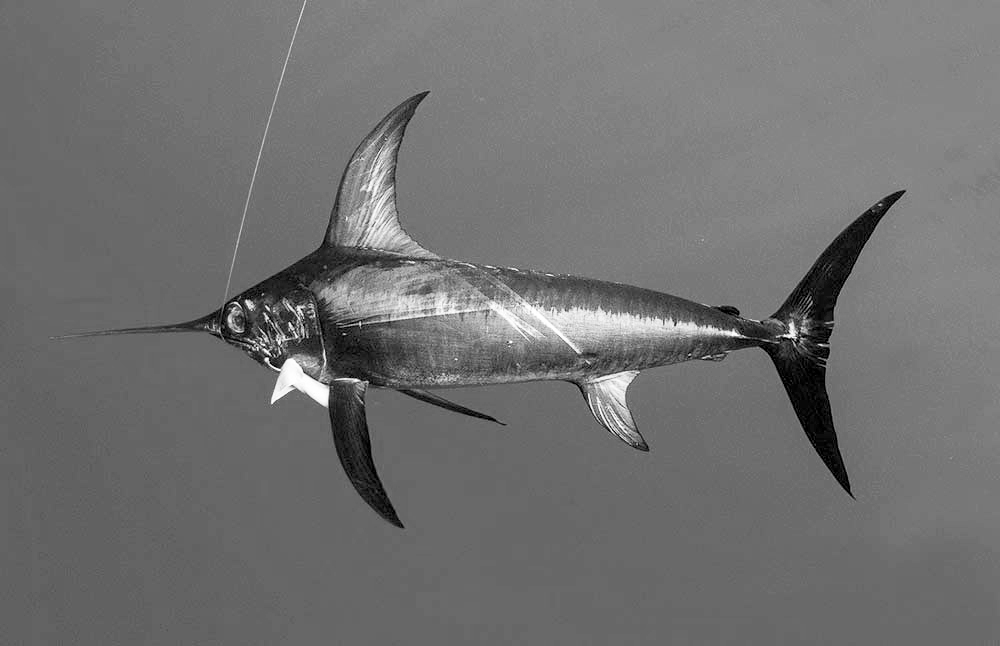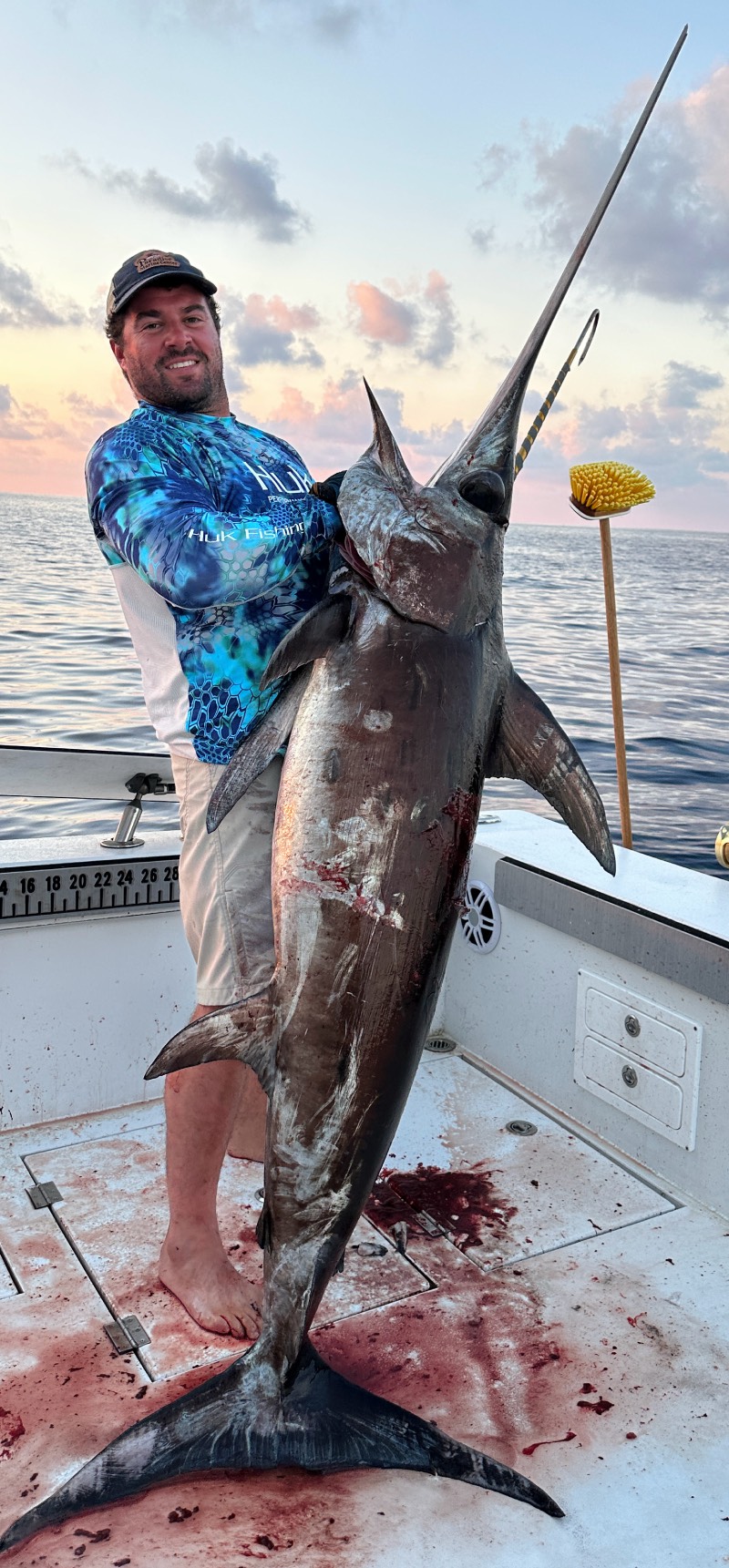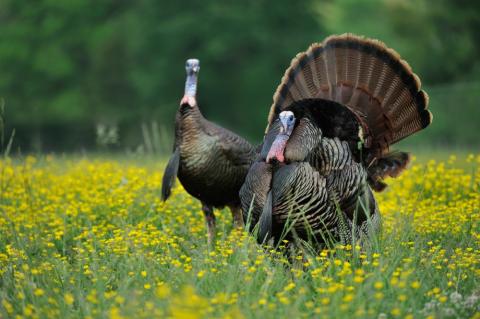Once nearly wiped out, this species is experiencing an incredible rebound.
By Sam White
Just a decade ago, the idea of recreationally fishing for a broadbill swordfish would have been virtually unthinkable. The species was being heavily overfished by commercial longlining efforts concentrated along the East Coast and especially in the spawning grounds off the Straits of Florida, that vital swath of water between the mainland US and the islands of the Bahamas where these fish gather to produce their future generations. But thanks to some sound conservation measures, including the banning of longline fishing in many of those areas most vulnerable, the species is making an incredible comeback.
Headed Downhill

In 2019, the National Oceanic and Atmospheric Administration announced that swordfish populations were down by a whopping 65 percent in the early 2000s due to the efforts of the commercial longline fishery, which was targeting broadbills nearly exclusively because of their high market value. These boats set a miles-long main line from a series of buoys called high-fliers, clipping individual baited dropper lines at various intervals. This results in thousands of hooks in the water, each with the potential of catching a swordfish or other pelagic, as well as marlin, porpoises, sea turtles, birds and other species regarded as bycatch.
The average weight of commercially caught swordfish caught in US waters had plummeted from several hundred pounds in the 1960s to just 90 pounds in 1998, a sign that the fishery was collapsing, and that commercial boats were landing a much younger class of fish. Recreational anglers all but gave up even attempting to target broadbills.
Course Change Ahead
Knowing that sustainable fisheries management first requires a sound, science-based approach based on a good understanding of the overall stocks as well as the incredible challenges they faced, NOAA began to investigate ways to reverse this downward trend before the swordfish stocks collapsed completely. The point of no return was rapidly approaching.
By the early 2000s, NOAA instituted several key rules which ultimately led to the turnaround. These included strict limits on the number of commercial vessels allowed to participate in the longline fishery, with minimum size and bag retention limits for both recreational and commercial boats. More specifically, they instituted a series of closures to prevent longlining in waters with historically high levels of undersized swordfish, most notably off the Straits of Florida and in portions of the Gulf of Mexico. These spawning grounds were placed off limits, and the results were positive in both regions. By allowing at least one class of fish to successfully reproduce, stocks quickly began to rebound. And to ensure the closed areas remained so, satellite tracking systems were mandatory on most commercial vessels actively targeting broadbills in those fisheries.
The International Outlook

Another issue: Swordfish are a true pelagic species, crossing the boundaries of many different nations along their migratory routes. This requires an international management solution—even with US fisheries managers leading the fight, without a strong coalition among other countries, any successes in rebuilding the stocks could be quickly wiped out elsewhere. Enter ICCAT: the International Commission for the Conservation of Atlantic Tunas. This is the top fisheries management organization on a worldwide level for billfish and tuna species—including swordfish—and a key player in any conservation efforts. With US-based commercial interests leading the way by adopting key strategies, ICCAT followed suit with a similar plan to rebuild stocks internationally while also reducing bycatch. By pressing other nations to adopt measures such as catch limits, minimum size lengths, using appropriate observers and reducing discards and bycatch, a brighter future was just around the corner for this species.
Today, NOAA considers the swordfish stock in the North Atlantic to be fully rebuilt and maintaining above-target population levels, although they are understandably keeping a close eye on things. This is especially true given the renewed popularity of this species among recreational anglers, who are now deep dropping during the daytime as well as targeting these fish in the more conventional nighttime surface fishery.
If you choose to harvest a swordfish, the current minimum size is 47 inches as measured from the tip of the fish’s lower jaw to the inside fork of the tail; anglers are allowed one per person to a maximum of four per vessel, and a Federal Highly Migratory Species permit is required. Anglers are also required to report swordfish landings to NOAA within 24 hours of returning to port.



























